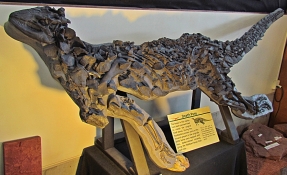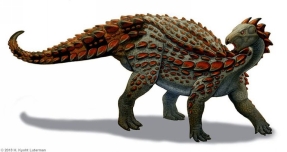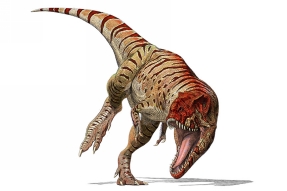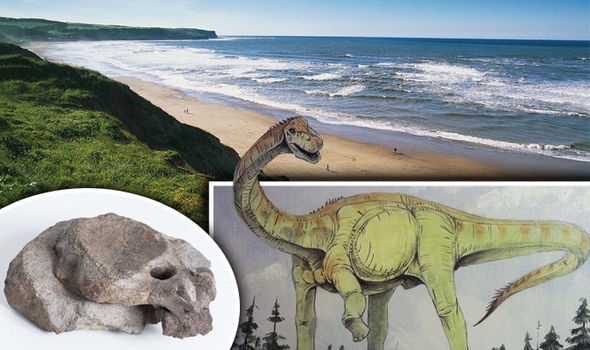Boarding @ Home: Day 58/84 : International Dinosaur Day
Since Elliot chose to shop on Amazon for dinosaur attire [Day 55/84] in time for his father's birthday on 16th, dinosaurs have been much on the mind … so this Day is well apposite!
International Dinosaur Day is today, the 3rd Tuesday in May. It was started by US teachers back in 2016 with the goal to encourage student interest in Science, all things Fossilized and certainly all things Dinosaur. The 3rd Tuesday was selected because it is before the very end of the school year … The thinking is that by having a Dinosaur Day towards the end of the school year there would be more interest by everyone in visiting museums and monuments, libraries, bookstores and of course online. Everyone is encouraged to join in just as you would like and in your own capacity to help others all over the world develop a deeper interest in Dinosaurs and all the peripheral fields of Scientific Endeavour. [This is just one of several Dinosaur Days that can be traced on the internet.]

The 100 million year old Queenslander above is known locally as Clancy and lived well NW of Brisbane. It's a Wintonotitan, one of the first sauropods to be named in Australia. Sauropods are large four-legged herbivores and Wintonotitan was a tall gracile animal that might have fitted into a giraffe-like niche. This was a Titanosaurs, the largest animals ever to walk the earth. Clancy was approximately 15 to 16 metre long, around 3 metres high at the hip and weighed approximately 10 to 15 tonnes.
Our Jurassic coastline in Dorset. Reptiles and amphibians from the Mesozoic Era totally dominated animal life on earth. The Coast is one of the most important sources of Jurassic reptile fossils in the world, including ichthyosaurs, plesiosaurs, giant pliosaurs and even a unique dinosaur called Scelidosaurus. Along with these creatures there are giant amphibians from the Triassic Period and pterosaurs, crocodiles and dinosaurs from the Cretaceous Period, all coming from different parts of the coast. Scelidosaurus lived during the early Jurassic Period, during the Sinemurian to Pliensbachian stages around 191 million years ago. This genus and related genera at the time lived on the supercontinent Laurasia. Its fossils have been found near Charmouth in Dorset and are known for their excellent preservation. Scelidosaurus [below] has been called the earliest complete dinosaur and is the most completely known dinosaur of the British Isles.
 
After initial finds in the 1850s, comparative anatomist Richard Owen named and described Scelidosaurus in 1859. Only one species, Scelidosaurus harrisonii named by Owen in 1861, is considered valid today. Scelidosaurus was about 4 metres/ [13foot] long and a largely quadrupedal animal feeding on low scrubby plants which were bitten off by the small, elongated head to be processed in the large gut. It was lightly armoured with long horizontal rows of keeled oval scutes that stretched along the neck, back and tail.
Alberta was a happening destination for myriad dinosaurs. Visitors flock to Alberta to retrace the thunderous steps of these prehistoric creatures, learn how they lived and died and see close up thousands at their bones. Some of the most important discoveries on the planet have been made in Alberta, many of which can be seen at the province’s two dinosaur museums, the Royal Tyrrell Museum in Drumheller and the Philip J. Currie Dinosaur Museum in Grande Prairie. Two of these can illustrate what has been discovered. The Albertosaurus [below right] is at the Royal Tyrrell Museum of Palaeontology in Drumheller. In 1910 American paleontologist Barnum Brown found nine different Albertosaurus, a type of Tyrannosaur, near Dry Island Buffalo Jump Provincial Park in central Alberta. In 1996 paleontologist Dr. Philip J. Currie looked again at the site and found 26 more Albertosaurus aged two to 20 some of which are also on display at the Royal Tyrrell Museum. The bones showed for the first time that Tyrannosaurs lived in large noisy carnivorous groups.
 
The Albertavenator curriei [above left] was the size of a human today with little arms walking around on two legs and covered in feathers. It was a uniquely discovered dinosaur species that lived 71 million years ago. Named after Currie the bird-like creatures are part of the Troodontidae family. Finding these bird-like bones is rare and paleontologists are hoping to find a complete skeleton eventually.
Have any dinosaurs been found yet in Northamptonshire? Cha deach dineosairean a lorg fhathast No dinosaurs have been found yet - although underneath towns such as Daventry and Northampton there may well lie some remains. There are also likely to be a number of marine reptile fossils discovery. Much of the underlying and exposed strata is sedimentary rock albeit mixed in with a good deal of Quaternary [late Pleistocene] glacial melt water deposits and alluvial concentrations in the Nene valley in the direction of the Wash basin. The majority of the sedimentary rocks found in the county date from the Jurassic period including rocks dating from the lower and mid Jurassic. For most of this time Northamptonshire was covered by a shallow sea. Levels rose and fell influencing river deltas and the deposition of sediments from the land. These sediments make up part of the great Jurassic belt that runs from Dorset in the south to Cleveland in the north, but unfortunately so far no noteworthy dinosaur fossils have been discovered. Finding dinosaurs in Northamptonshire will be tricky as the geology represents a predominantly marine environment and dinosaurs were purely terrestrial so unlikely to swim far out to sea and end up deposited as bones ready to be fossilised in the middle of the sea – although many dinosaur fossils have been found in marine sediments. No scope yet for obnunciation, news before it happens! Hold it a moment, I think we found one.

Yorkshire does fractionally better! Their fossil was a backbone from a group of dinosaurs that included the largest land animals to have ever walked on earth. The bone, from the Middle Jurassic Period and about 176 million years old, was found on a beach at Whitby after it fell out of a cliff face. It represents the earliest skeletal record of this type of dinosaur from the United Kingdom and adds to existing evidence from Yorkshire dinosaur tracks. Sauropods [see Wintonotitan in Queensland first above], often referred to as Brontosaurs - include some of the largest plant-eating dinosaurs to have roamed the Earth and were a successful group for nearly 150 million years. They possessed distinctive long necks and tails, small heads, a large body and walked on all fours. Some species grew to 115ft long and possibly weighed as much as 80 tonnes.

And talking of Yorkshire … Mathew took exercise and met at 2 yards distance with us today. Is fhada bho nach fhaca mi thu! Long time no see! Fŕilte gu Milton.
Published Date: May 19th 2020
|





